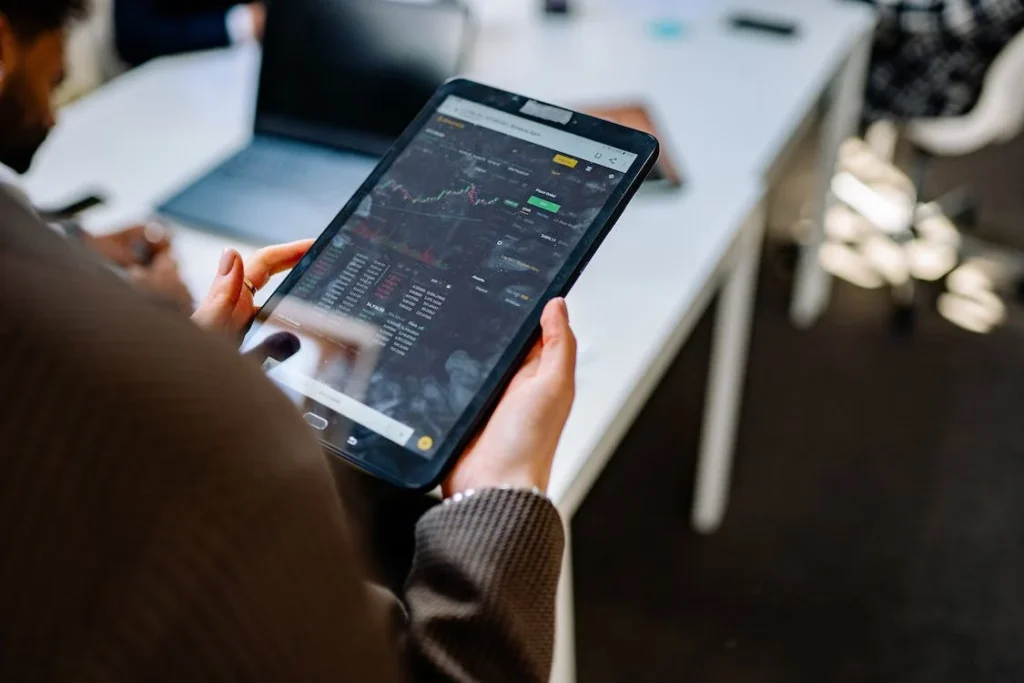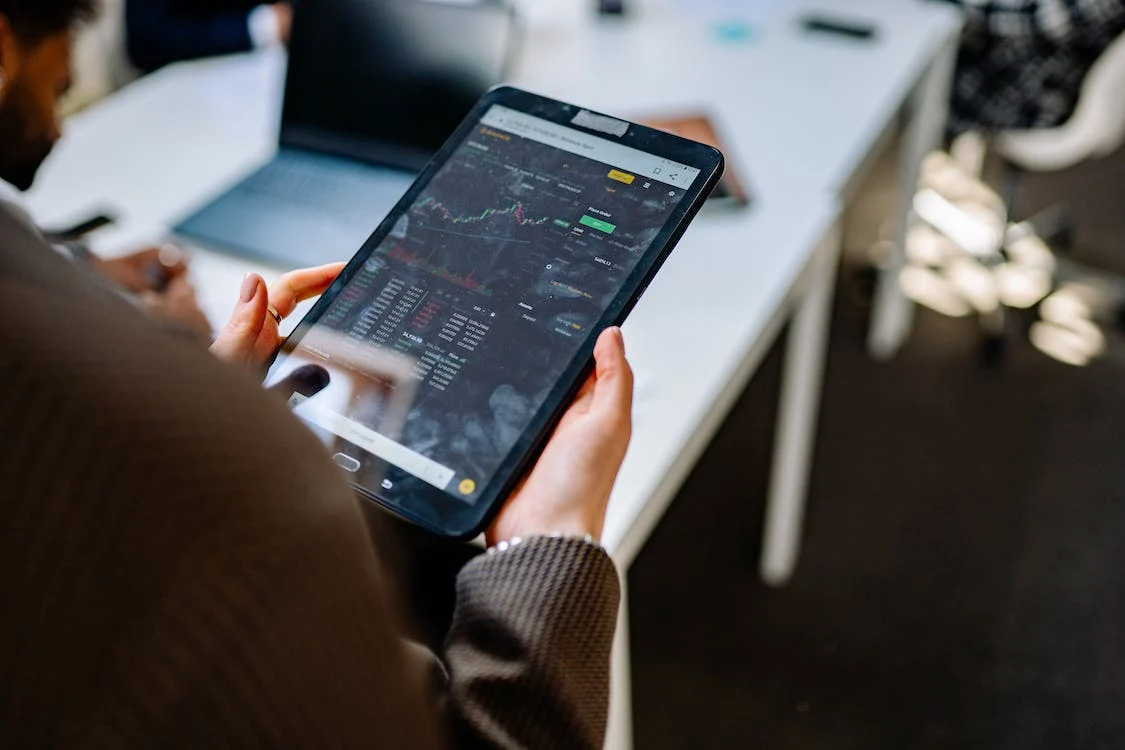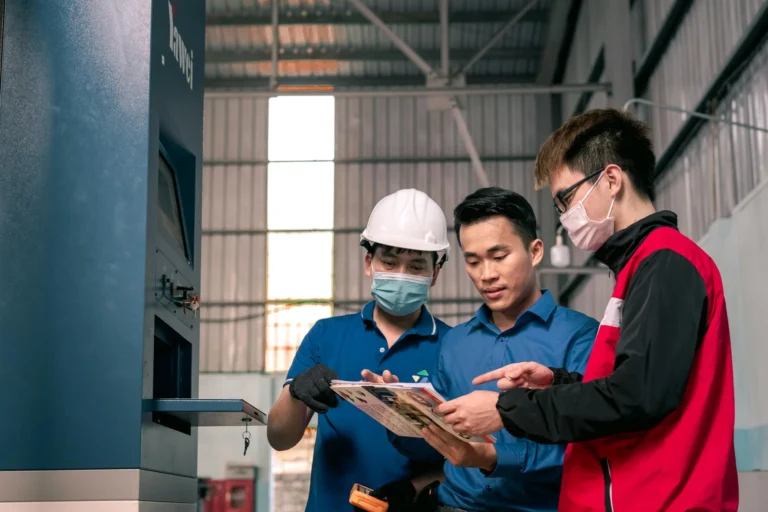As digital technologies continue to infiltrate all aspects of our lives, one of the sectors experiencing significant transformation is construction. At the forefront of this digital revolution is the Internet of Things (IoT), a network of interconnected devices and sensors that communicate and share data. The integration of IoT in construction is not just a futuristic concept; it’s already happening, leading to increased efficiency, enhanced safety, and real-time monitoring capabilities.

IoT: A Game-Changer in Construction
IoT technology offers unique opportunities for the construction industry. By placing sensors on equipment, materials, and even workers, construction firms can gather real-time data, monitor activities remotely, and automate certain processes. IoT devices can track everything from the condition of equipment to the progress of a project, providing a level of insight and control previously unimaginable.
Boosting Efficiency
IoT has a significant impact on construction efficiency in several ways. One major area is equipment tracking and management. With IoT, construction companies can monitor the usage and condition of their equipment in real-time. This allows for predictive maintenance, where potential issues are identified and addressed before they cause failures, reducing downtime and repair costs.
Furthermore, IoT devices can monitor fuel consumption and operational efficiency, helping companies identify and rectify inefficient practices. They can also track the location of equipment, preventing loss and theft.
IoT can also improve supply chain management. By equipping materials with sensors, companies can track their location and condition, ensuring timely delivery and minimising waste due to damage or deterioration.
Enhancing Real-Time Monitoring
Real-time monitoring is one of the most exciting benefits of IoT in construction. Sensors can track a wide range of parameters, including temperature, humidity, noise levels, and structural strain. This data can help identify potential issues early, like structural weaknesses or hazardous site conditions, and allow for immediate action.
IoT can also provide real-time visibility into the progress of a project. By monitoring the location and activity of workers and equipment, project managers can gain a clearer picture of whether a project is on schedule and identify any bottlenecks.
Improving Safety
Construction sites can be dangerous places, but IoT can significantly enhance safety. Wearable IoT devices can monitor workers’ vital signs and fatigue levels, alerting them and their supervisors if they’re at risk. Sensors can detect hazardous conditions, like gas leaks or high noise levels, and alert workers immediately. Equipment sensors can also prevent accidents by detecting unsafe operation or potential equipment failure.
Challenges and The Road Ahead
Despite the immense potential of IoT in construction, there are challenges to overcome. These include the initial cost of implementing IoT, data security concerns, and the need for robust data analysis capabilities.
However, as IoT technology continues to evolve and become more affordable, these hurdles are likely to diminish. The key lies in choosing the right IoT solutions, implementing them effectively, and training staff to use them correctly.
The intersection of construction and IoT is an exciting frontier, offering opportunities to make construction safer, more efficient, and more predictable. As construction firms increasingly embrace IoT, we can expect a shift towards a more data-driven industry, where decisions are based on real-time information and projects are completed more efficiently and safely.
Further Applications of IoT in Construction
The application of IoT in construction extends to quality control as well. IoT sensors can monitor environmental conditions that may affect the curing of concrete or the installation of certain materials, ensuring that these tasks are carried out under optimal conditions.
Another exciting application is in the realm of building operations post-construction. IoT devices can monitor the performance of a building’s systems, including HVAC, lighting, and fire safety systems. This information can be used to optimise operations, reduce energy consumption, and maintain the comfort and safety of the building’s occupants.
IoT can also revolutionise the way we manage traffic in and around construction sites. For example, using GPS and proximity sensors, construction vehicles’ movement can be optimised to prevent congestion and ensure efficient material transportation.

Future Potential of IoT in Construction
Looking forward, we can anticipate even greater integration of IoT in the construction industry. The continued miniaturisation and cost reduction of sensors will make it feasible to monitor even more aspects of construction processes.
Moreover, the increasing use of machine learning and AI in data analysis will enable construction firms to extract more value from the vast amounts of data collected by IoT devices. This could lead to more accurate predictions of project timelines, better identification of potential risks, and more effective resource allocation.
The advent of 5G technology also holds great promise for IoT in construction. The higher speed and lower latency of 5G will enable more reliable and real-time communication between IoT devices. This will open up new possibilities for remote operation of construction machinery, real-time video monitoring of construction sites, and other latency-sensitive applications.
The integration of IoT with other digital technologies such as Building Information Modeling (BIM), Augmented Reality (AR), and Virtual Reality (VR) will further enhance construction processes. For instance, IoT data can be used to update BIM models in real-time, providing an accurate digital representation of the construction site. This can enhance communication, coordination, and decision-making among project stakeholders.
IoT and Green Construction
The push towards sustainability and green construction is a significant trend in the construction industry. Here, too, IoT can play a vital role. For instance, sensors can monitor energy use, water use, waste generation, and other environmental impacts of construction activities. This data can be used to identify opportunities for reducing environmental impacts and achieving sustainability goals.
Moreover, in completed buildings, IoT devices can monitor and control energy use, indoor air quality, and other factors that affect a building’s environmental footprint. Thus, IoT can contribute to creating buildings that are not only built sustainably but also operated sustainably.
Implementing IoT in Construction: Key Steps
For construction firms looking to leverage IoT, a strategic and systematic approach is essential.
Firstly, companies need to identify the areas where IoT can deliver the greatest benefits. This could be equipment management, worker safety, project monitoring, or any other area that is a significant challenge or cost driver.
Next, companies need to choose the right IoT devices and systems. This involves assessing the capabilities, costs, and reliability of different devices and determining how well they meet the company’s needs. Compatibility with existing systems and ease of integration are also important factors to consider.
Once the devices are chosen, a comprehensive implementation plan needs to be developed. This should include technical aspects, such as installing and configuring devices, as well as human aspects, such as training staff and managing change.
Data management is another critical aspect of implementing IoT. Companies need to have the systems and skills in place to store, process, and analyse the vast amounts of data generated by IoT devices. They also need to ensure the security and privacy of this data.
Finally, firms need to monitor and evaluate the performance of their IoT systems regularly. They should be prepared to make adjustments and improvements as they gain experience and as technology evolves.
Final Thoughts
While the intersection of IoT and construction is still emerging, the trajectory is clear: IoT is set to become an integral part of the construction industry. The potential benefits in terms of efficiency, safety, real-time monitoring, and sustainability are too significant to ignore.
However, to fully realise these benefits, construction firms need to approach IoT strategically. They need to invest in the right technology, develop the necessary skills, and be prepared to adapt and innovate continually.
IoT represents not just a shift in technology but a shift in mindset. It’s about embracing data, becoming more proactive, and striving for continuous improvement. Those construction firms that can successfully navigate this shift will be the ones that thrive in the construction industry of the future.
While IoT continues to revolutionise the construction industry, it’s equally crucial to have robust project management tools that can keep pace with these advancements. Wunderbuild is a comprehensive construction management software that simplifies project management, enhances collaboration, and offers real-time updates, making it an indispensable tool in the digital age of construction. It helps to effectively streamline processes, manage costs, and facilitate seamless communication amongst teams, ensuring projects are delivered efficiently and successfully. Discover how Wunderbuild can boost your construction management process here.




